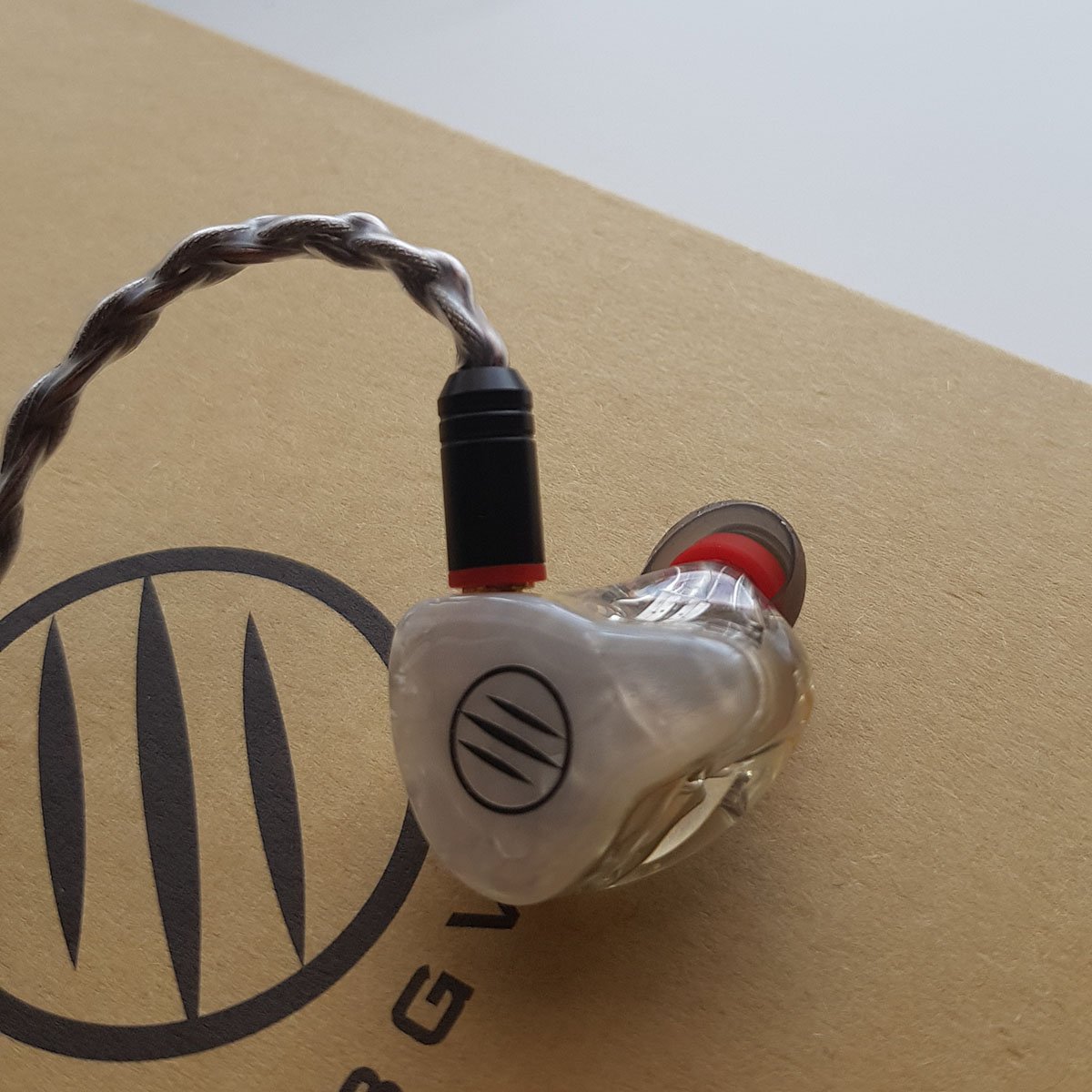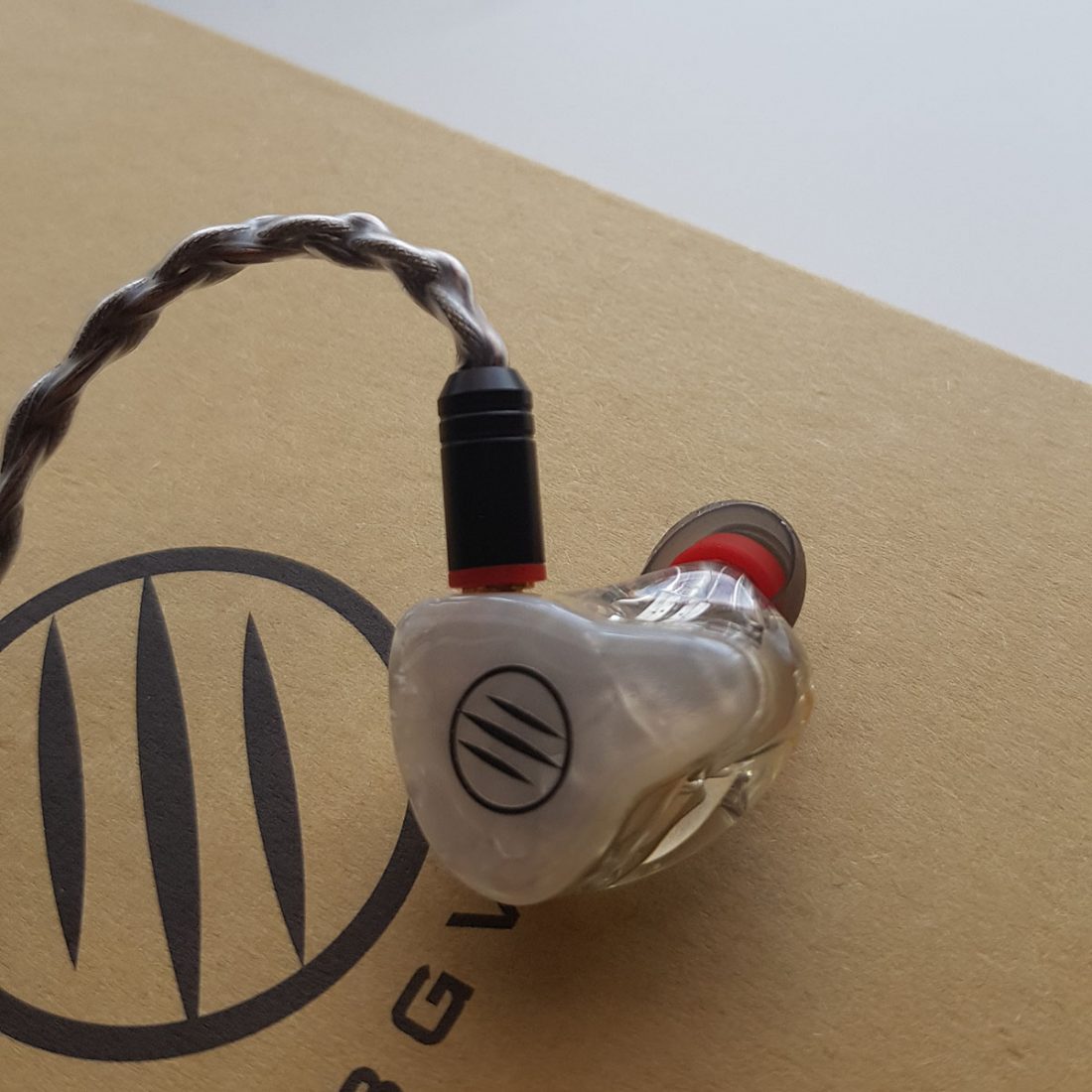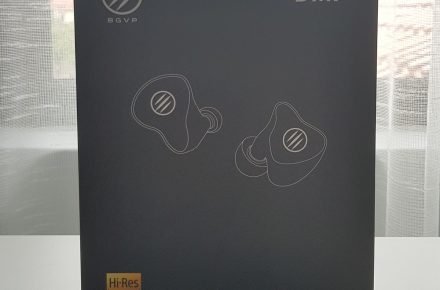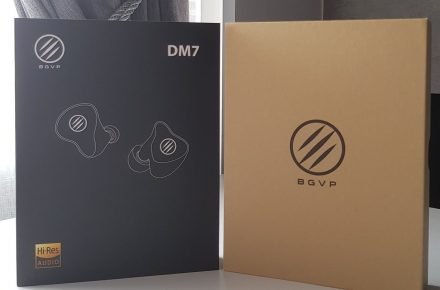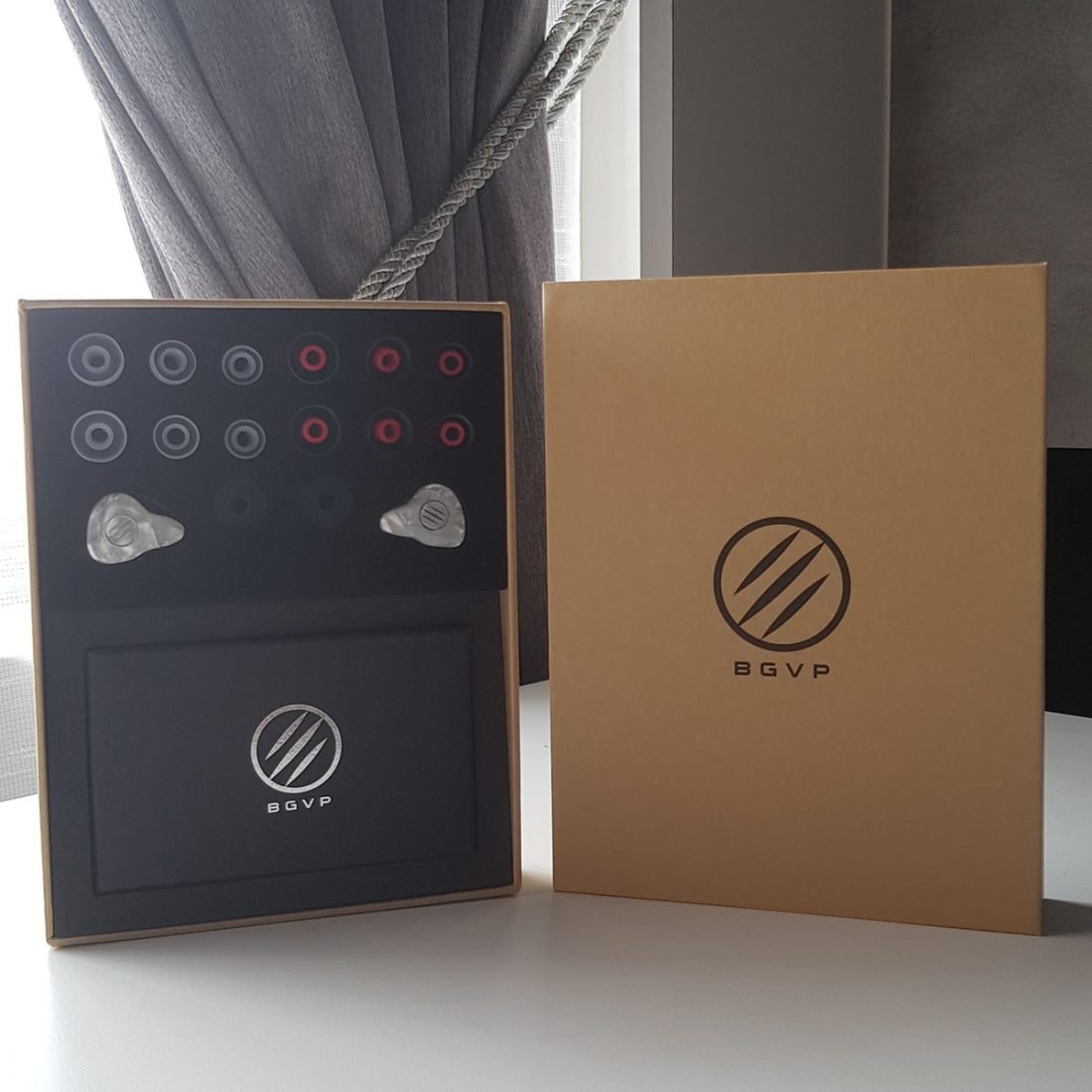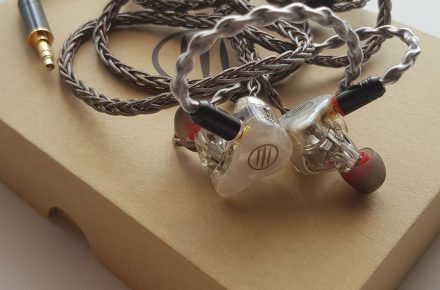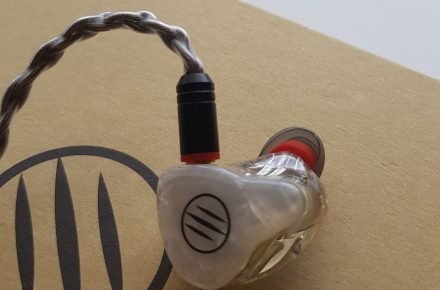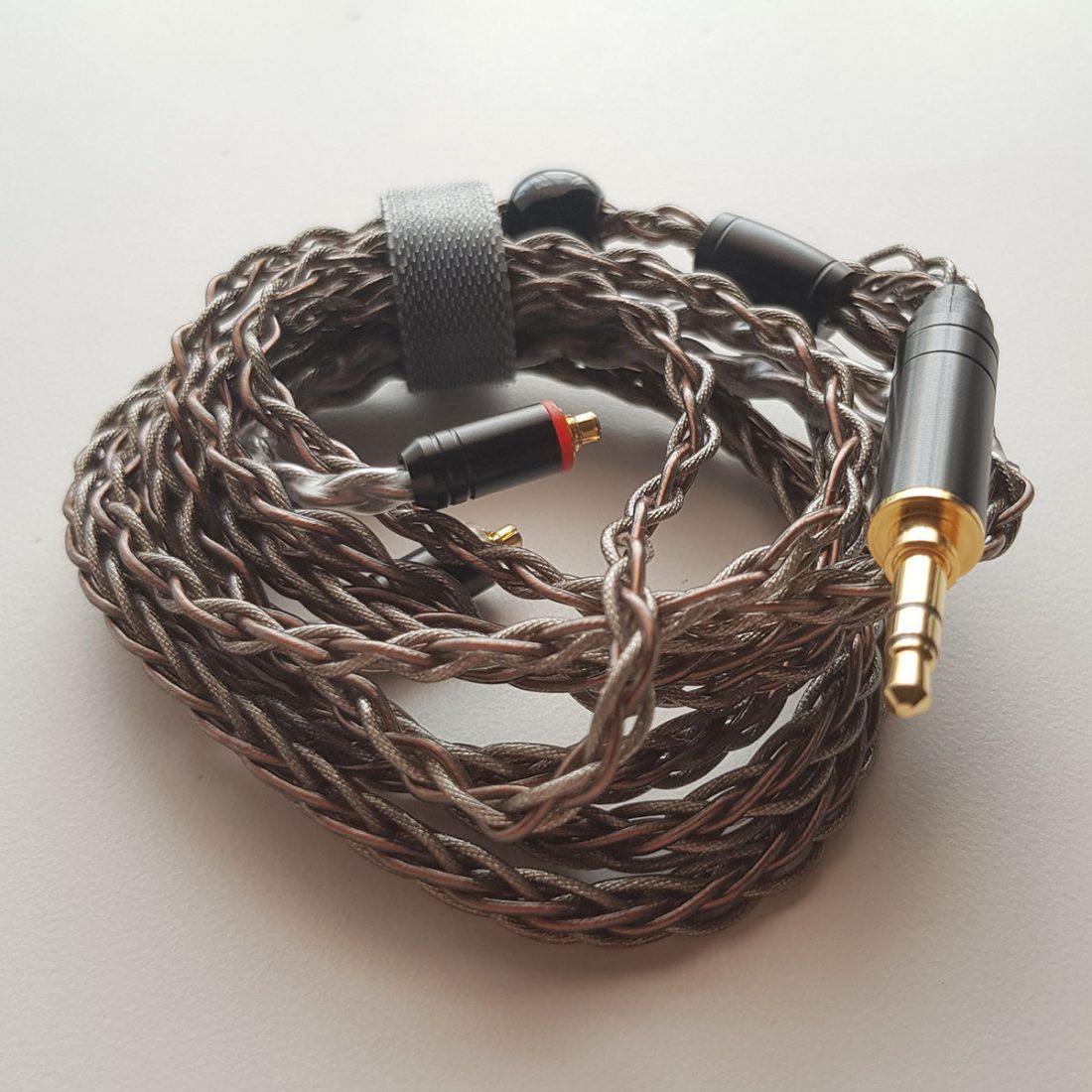BGVP is back, hungry for more, looking to prove that it’s better than ever through the release of BGVP DM7 – the natural successor to its renowned sibling, the DM6.
We Meet Again
Prior to last year, BGVP as a company was a relative unknown, eluding even the most seasoned of personal audio enthusiasts. However, through releases such as the revered DM6 and the dependable DMG (reviewed here by yours truly), 2018 has served to be a breakthrough year for BGVP, catapulting the brand into heights previously unscaled, earning its well deserved praise as a company known for producing competitively priced, high performing IEMs.
As I prepare to embark on my second encounter with BGVP, I figured to revisit BGVP’s webpage, and was pleasantly surprised to have found more information about the brand than before. Though it’s still “incomplete” in my view, considering that product pages for the DMG (if not discontinued) and the brand new DMS is not up, at least it solved a major question of mine:
BGVP = Budget Gear for Various Personalities (props to my editor who also answered the question in my previous review).
The newly released BGVP DM7 will the subject of my review this time round, and judging by its amazing specs (on paper) and the fact that it represents the ‘upgrade’ to the well-received DM6 (which I’ve salivated and pondered upon countless times throughout the past year), I’m excited to embark on this new journey and discover the unit in more depth.
Will the DM7 follow in the lineage of its brothers and hit it out of the park? Time to find out.
- Neutral-warm sound signature that plays well with most genres.
- All necessary accessories provided but one, including a more premium cable.
- Fits like a glove and isolates well.
- Strong lower treble that borders on being strident.
- Again, no carrying case provided.
- Thicker cable that feels heavy at times.
Technical Specifications
- Drivers: 6 Balanced Armatures, incl. Knowles SWFK-31376, Knowles ED-29689, Sonion 33AP007, and Knowles CI-22955
- Sensitivity: 115dB SPL/MW
- Input Impedance: 13.5 Ω
- Frequency response: 10 Hz – 40 kHz
- Distortion: ≤0.5%(1 KHZ)
- Weight: ~5.3g
- Cable: Single crystal copper + single-crystal silver-plated copper wire
- Cable length: 1.2m ±5%
Again……how many did you say?
Like the DMG, the DM7 holds plenty in its relatively small shell, its sound driven by 6 balanced armature drivers from reputable companies like Knowles and Sonion. Specifically, DM7 utilizes a combination of the 2 Knowles SWFK-31376 (for ultra-highs), 1 Knowles ED-29689 (for highs), 1 Sonion 33AP007 (for mids) and 1 Knowles CI-22955 (for lows).
This complex configuration of drivers is integrated together through 4 way passive crossover, where the sound is transmitted through 4 separate channels (for ultra-highs, highs, mids and lows respectively) that is equipped with 3 Knowles and a patented acoustic damper then out using 4 individual sound bores, producing a frequency range of 10 Hz – 40 kHz at a distortion rate of ≤0.5%(at 1 kHz).
A low impedance rating of 13.5 ohms paired with a sensitivity rating of 115 dB SPL/MW makes the DM7 a fairly easy to drive even through my mobile phone. I’ve yet to find a source that is unable to drive them to head banging, ear bleeding loudness so it’s easy to use them from various sources.
In addition, the DM7 represents, to my knowledge, a first in family – the first BGVP product to earn its certification as a Hi-Res Audio product. Although it’s not an instant telltale signs of audio superiority, it shows the amount of pride and work that BGVP has put into developing the product where it’s worth the effort in getting the extra recognition.
Retailing at $299, you will find it tough to find more bang for your buck in terms of straight-up specs from any other IEM. While implementation is still key to its success, it’s great to see these multi-driver beasts being offered to us at prices that were previously unheard of, with IEMs of similar configuration typically sold at more than double its retail price.
Packaging and Accessories
Same box, same surprises
Like it’s predecessors, the BGVP DM7 is presented in a small-to-medium sized brown box that was emblazoned with the BGVP logo. This time round, its sleeved in a piece of black cardboard with a simple sketch of the IEMs on it, marked with an instantly recognisable Hi-Res Audio logo.
Two cutout compartments made with foam is revealed upon opening the brown box, where one compartment houses both the IEMs and it’s variety of tips, while the other houses a black box that had the cable, cleaning brush, manuals/papers and more tips. In total, the accessories provided with DM7 were as follows:
- A MMCX cable.
- A set of 3 black silicone tips (S/M/L), with one already attached to the unit.
- A set of 3 grey silicone tips (S/M/L).
- A set of 3 clear silicone tips (S/M/L).
- A pair of black, medium sized foam tips.
- A cleaning brush.
- Manuals and paperwork.
BGVP was hell-bent on ensuring the IEM’s fit was not hindered by incompatible (to your ears) ear tips, preparing large assortment of tips that not only varied in size but in construction as well. This will certainly play well with users that wish to explore the art of tip rolling, and more importantly, provide options for one to achieve a better fit. Remember: a great sound is just as important as any other step in achieving great sound.
Regardless, a (recurring) glaring omission is the lack of a well-built case or pouch to store and carry the IEMs with. It continues to surprise me that BGVP refuses to pack one with its array of accessories, and I would have gladly swallowed a $10 price increase to have one prepared, though one would think that it should be covered under its retail price from the start anyways.
Design and Build Quality
Build, Fit and Isolation
Shell is impeccably built and fits like a glove, with isolation that rivals many.
The review unit I received came with white pearl faceplates in a clear, see-through shell that seems to be fairly common among current DM7 owners. What’s less seen is the other finishes: a completely clear finish, a black faceplate, and smoky clear shell finish, and finally a blue pearl faceplate with transparent blue shell finish. All of them look great and frankly I would rock with any colourway.
The DM7’s shell is a case of manufacturing beauty, where its 3D-printed resin cavity shell, made using acrylic fiber and printed using 3D-printing equipment from Envision TEC, is finely crafted to near flawless standards. The outer shell is smooth on every touch, with manufacturing imperfections such as bubbles were nowhere to be found on my unit though I’ve heard of limited units that were not so nicely finished hence your luck may vary.
The shell felt well-built and sturdy yet, like all my other acrylic shell based IEMs, I subconsciously take extra care in handling them as they look more fragile than IEMs made with other shell materials. Regardless, the DM7s are so mesmerizing to the eyes in its aesthetic design that you wouldn’t risk any physical harm in fear of losing a form of eye candy.
Further engineering was done with the shell, where BGVP had designed it with help from Siemens, working out a shell shape that was based on over 10 million ears to get close to a shape that is able to “one size fits all”. The IEMs, with its light build and comfortable shape, was comfortable to wear for long stretches, where it snugly fitted into my ear without the need for complicated IEM-wearing procedures.
The one issue I had about the fit is the incompatibility of its stock tips with my preferred fit. Upon experimenting with the provided tips (only in terms of fit), I found myself switching them out for my tried and true SpinFit tips for better comfort. Clearly, this was a personal preference case, and I urge you to try the stock tips out before having to look into other options.
The DM7 perform splendidly in the noise isolation department, creating a vacuum-like atmosphere upon proper insertion into both ears. The insertion was deep enough to seal most if not all of the ambient noise from my surroundings, but never ventured into the realm of over-insertion (which hurts). Train noise was minimal if anything and conversations in the background were lost, as they should be.
Cable
The inclusion of removable cables in IEM design has seen a massive uprise over the past few years, with DM7 no exception. It uses high-quality MMCX connectors as its medium, which I used to not be a fan of (they get loose quickly and on rare cases have connection issues) but has slowly warmed up to due to the solid build of more recent IEMs with said connectors.
Having MMCX connectors would prove to be a good move on BGVP’s end as aftermarket cables using them are fairly common, with options available at many price ranges. Whether you’re looking into upgrading your cable into one of the fancier, more expensive ones, or just replacing a non-functional cable, you should have no trouble finding a replacement in a fairly saturated cable market.
The stock DM7 cable measures at a length of 1.2m (~4ft) and fitted with a straight gold-plated 3.5mm plug. It is an 8 core cable made up of four single-crystal copper cores and the remaining four cores made of single-crystal copper mixed with silver foil. All those buzzwords may not mean much to some however you can be safely assured that this stock cable looks and feels more premium than most others.
The cable’s chin slider had a unique look, with a plastic, ball-like design that was similarly easy to use and slide when compared to its more common cylindrical/rectangular counterparts. The cylindrical Y-split was functional if not all inspirational (like the chin slider), with TPU sheaths to act as ear guides that soft and pliable. I wear eyeglasses every day and felt no discomfort on the ear when having both on.
Overall the cable wears thick, maybe a tad too thick, and was non-microphonic but created the illusion of it being heavy. I would happily use this cable with any of my other compatible IEMs every day but would tweak it slightly to have a thinner, less weighty presence. No comments would be made of the sound as I want to keep our focus on the prize – the BGVP DM7.
Equipment Used
Sources:
- iBasso DX150
- iBasso DX90
- Questyle QP1R
- HiBy R3
- Samsung Galaxy S8
IEMs:
- Audio Technica LS200
- Campfire Audio Io
- Drop/Massdrop Plus
Sound Quality
If lush and smooth mids with an extra touch of bass presence is your jam, then be sure to make this a must try, if not a must buy.
Overall Sound Signature
The DM7’s sound is BGVP’s take of a neutral-warm sound signature, where it’s anchored by a fast and punchy bass, a clear and lush midrange, ending with some sparkling albeit pesky highs. It lightly resembles a W-shape sound, with a lower treble emphasis plus a bass that puts more focus on the midbass.
DM7 would be suitable for those who’re looking to make the next step up from their entry level into the realm of increased resolution yet still requires a more forgiving touch on their lesser quality music collection, paired with a sound signature that would be easy on the ears for most musical genres.
Fast and Maybe Furious?
DM7’s bass is a tasteful step north of neutral, with the increase in quantity a welcomed addition. The extra touch of bass would never overpower the overall presentation, instead of giving an added “oomph” to those thumping low end notes that are ever-present, especially on modern recordings, reminding you about its existence without bashing through the front door.
The sub bass comes, rather, runs across at a blistening fast pace, hitting your ear with moderate impact and good dynamics. It’s akin to a fleet-footed outboxer, hitting high-speed jabs in well-controlled fashion though lacking power on certain harder hitting bass dives. So while the DM7 will not blow your socks off in an instant, its full, filled with energy sub bass lends for a low end that slowly but surely impresses.
Mid bass surpasses the sub bass in regards to quantity, and is the region with most uplift. In this region, the music was clean and highly detailed, with deeper male vocals a joy to listen. The vocals and brass instruments here are rich and lush, luring you in then immediately amazes, takes charge and mesmerizes.
Bag Full of Riches
The DM7 hit the nail on its head hard with its mids presentation: forward, smooth and dare I say even decadent. Mild emphasis can be found on the midrange, mild at least in comparison to its highs and lows but with just enough lift to make sure that most vocals are front and centre in your headspace (without being shouty).
The DM7 cleanly transitions from its mid bass to its lower mids, where it is arguably the closest region to being neutral. The lower mids are buttery smooth, with male vocals within the region particularly shining through, coming in full and rich, ensuring you stay to listen for more with an experience that’s so sweet and easy.
The more highlighted upper mids ain’t no slouch either, with vocals pushed forward to smack your face with richness. Like the lower mids, smoothness rules over, allowing the warmth, the presence of female vocals and wind instruments that reside within the region to win your favor through its natural allure. Such is it’s lushness that I often find myself lost to the music, submitting to the weave of its magic.
Sparkly Conductor
Treble is the black mark in DM7’s overall presentation, particularly on its lower treble. The overall treble presentation emphasis is on a similar level to that of DM7’s bass, with your kicks, cymbals, and snares at the forefront. Upper treble sounds sweet and airy, with a sense of delicateness that plays very close to the line differentiating sweetness and sibilance.
Lower treble, the more aggressive of the two, is crisp but at times sounds edgier even for treble loving taste, bordering sibilance. The mid to treble transition felt peaky and as such would lead to string instruments sounding a little steely or piercing. It’s balanced well by DM7’s bass and mids but the harshness becomes more apparent when the focal point is placed on instruments such as violin and electric guitar.
All in the Details (and the Soundstage)
DM7s resolving capabilities ensure it performs respectively in the details department, with both the lower end and midrange clear and transparent, bass extending well below what I could hear. Treble does not extend as well, and while upper treble was detailed, the increased lower treble presence, hence increasing the apparent detail available, makes the details found here more artificial than the rest.
DM7’s soundstage screams for some depth, perhaps the cost paid for a more forward sound signature. Otherwise, DM7’s soundstage is wide and airy, with imaging and instrument spacing well done in large due to a black and spacious background that allows each instrument to easily find its own corner or space.
Comparisons
Audio Technica LS200
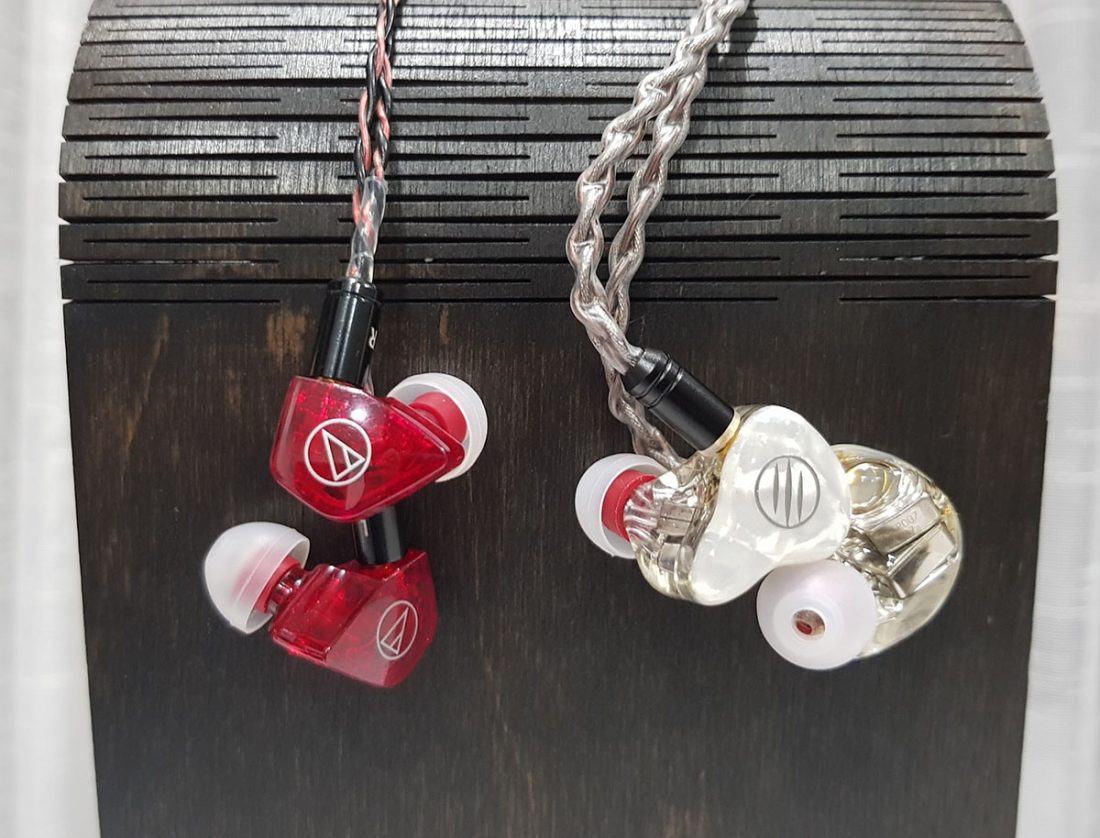
First launched in 2016, the Audio Technica LS200 has been a long-standing contender in the sub-$300 brackets since its release. It’s a 2 balanced armature per side IEM, with 1 being a super tweeter that focuses on the reproduction of highs while the other is a full range driver that produces the mids and lows. The current market price for a LS200iS is at $250.
Both IEMs have a vaguely similar direction in a W-shaped response, but that’s where the similarities end. On the bass end, both share a lift in the region, with the uplift spotlight on their mid bass. Of the two, the DM7s attenuation is more pronounced,with the low end hits harder but on the flipside, the LS200’s bass is better extended and more detailed despite lacking some slam, so frankly it’s a debate between the balance of quantity and quality.
The midrange battle was akin to a heavyweight boxing round for me, with both IEMs excelling in the area. Both have rich and lush mids, with details to spare and are smooth like silk. If I had to differentiate them, the DM7 had a touch more detail while the LS200 was perhaps more euphonic. This was a close and tough battle for me, and I’m glad I have both, but if you were to point a gun on my head, I would (only just) give the slight edge to LS200’s mids.
The upper registers, like the bass, is a toss-up that would lean one way or the other based on your preferences. The DM7 maintains a more analytical or clinical sound to convey more detail, though its aggressiveness borders its highs to a near sibilant experience. Comparatively, you trade detail and extension with the LS200’s treble but it sounds more transparent and is easier on the ears.
Campfire Audio Io
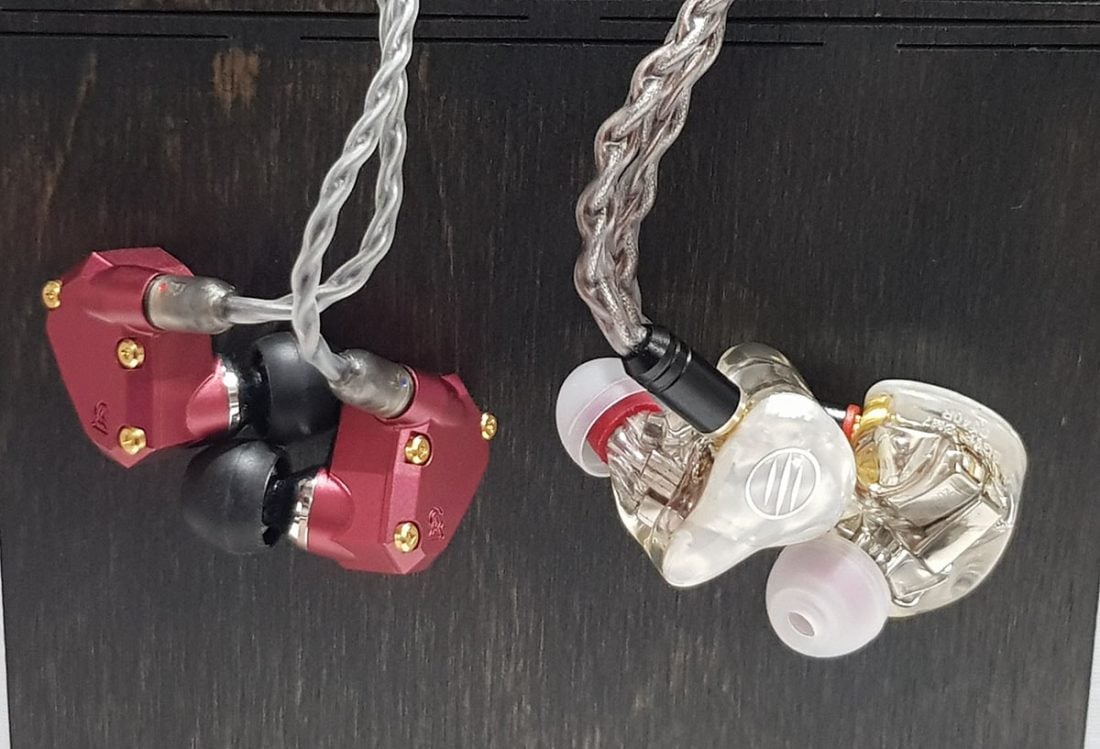
A more recent entrant to this price bracket is Campfire Audio’s freshly released Io. This is their newest take on a 2 balanced armature driver design, with one oversized woofer, presumably for the bass and mids, paired together a small tweeter for the highs. The retail price of the Io is currently set at $299, but do watch for warehouse deals from Campfire that they do from time to time.
The Campfire Io maintains an upward slope sound signature (think /) compared to the neutral-warm sound signature of the DM7. In comparison, the Io lacks energy in the low end department, preferring a softer approach that would render it unsuitable for modern, bass-heavy genres. On the other hand, DM7 prefers a heavier touch, punching harder than the Io. Detail and extension level of both are similar to my ears.
The midrange on both is tuned with different directions in mind. The Io’s mids focus on detail rather than emotion, whereas the DM7’s bring a taste of richness to the music. I largely prefer the DM7 when listening to vocal forward tracks. However, I tend to look towards my Io when it comes to instrumental songs due to its more detailed and increased (yet highly controversial) emphasis in the upper mids region.
Between the two, Io is brighter, with more energy and apparent detail especially in the upper treble. Smoothness exists as a dream on both, indicating that both were tuned at a risk of increased fatigue to the ears, achieving a clearer and more detailed sound. Because of its sound signature, the Io is less forgiving towards poorly recorded songs, so it’s naturally pivoted towards certain genres like acoustic and jazz.
Drop/Massdrop Plus
The Drop (previously Massdrop) Plus caught the community by surprise when first released in 2017, with the IEM, the first to be completely tuned from the ground up by the Drop, wowing people left and right with its superb performance at an affordable price. The Plus utilizes a 3 Sonion balanced armature design and retails (from Drop) at $300.
The Plus has a unique sound signature that is mainly neutral (perhaps slightly U-shaped) sound with a dose of fun in it. Between the two, Plus has the flatter bass, with more detail and extension but lacking punch in comparison. The bass tuning is also slightly different, with Plus’s bass emphasis located in the sub-bass region. Regardless, I still feel the DM7 hits harder due to its larger bass attenuation.
Both share smooth and articulate mids that is slightly forward in nature. Delving deeper, the Plus had the clearer and more defined mids of the two. Nonetheless, the DM7 prefers to tune its midrange around delivering a sweeter and more euphonic sound, so vocals were carried through in a more sensual and emotional manner.
The DM7’s treble is noticeably brighter, with the lifted highs on the Plus light in comparison, with both performing well on treble extension. The Plus’s highs comparatively lack air but is crisp and smoothly delivered. Alternatively, the DM7 had more apparent detailed but were more aggressive and sharp. Despite my undying love for treble promotion, I preferred the Plus’s highs as it helped me listen to my music for longer durations.
Final Verdict
Value Acquisition
With a little more experience on the belt through the DMG and DM6, the DM7, only one of a few new products from BGVP, strikes me as the statement product which showcases its next evolution step, bringing the same core ideas or values of delivering a design that excels in its cost to performance ratio, only this time at the mid-level price range.
This $300 and under price bracket is a battle arena that’s reserved for the strongest players, and in my eyes, BGVP struck it out of the park with the DM7. While it’s not the standout, first in line recommendation at the price (honestly, can anybody pick just one?), I would strongly advise you to put this on your must-try list, even if you have more than enough earphones to fit a village because this might just take your breath away.
The DM7s, like its BGVP siblings from before, is a strong contender for the best value for money in its price range. It makes the first rush through the gates with its well-prepared accessory set, accompanied with a fit that rivals even custom IEMs. The neutral-warm sound signature is sure to please many, wielding a well-crafted combination of resolution and playfulness that would do well with most genres that you throw at it.
Like everything else in the world, the DM7 is not without flaws. I could do without the peaky treble, which makes my string instruments sound a bit too aggressive. The overall ergonomics could be better if the cable was a little thinner, and honestly, do they really save that much cost by omitting a nice carrying case in the picture?
I’m stoked, and frankly, really surprised by how well the DM7 performs. What’s even more surprising is that, unlike the previous DM6, the DM7 did not have a run occupying the flagship seat – that now belongs to the ArtMagic V12. I wonder what sort of spell that could pull on me? In the meantime, I’ll be happily running my tunes through this IEM, so wake me up when my music ends.
